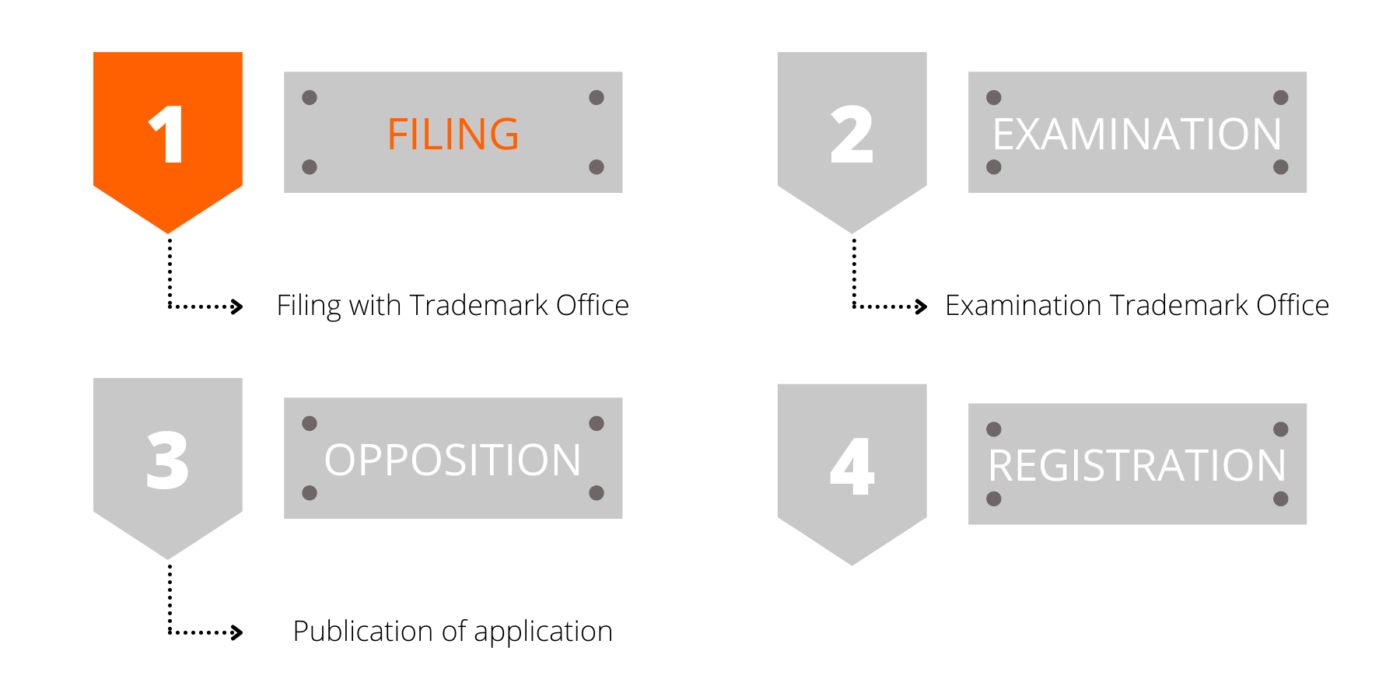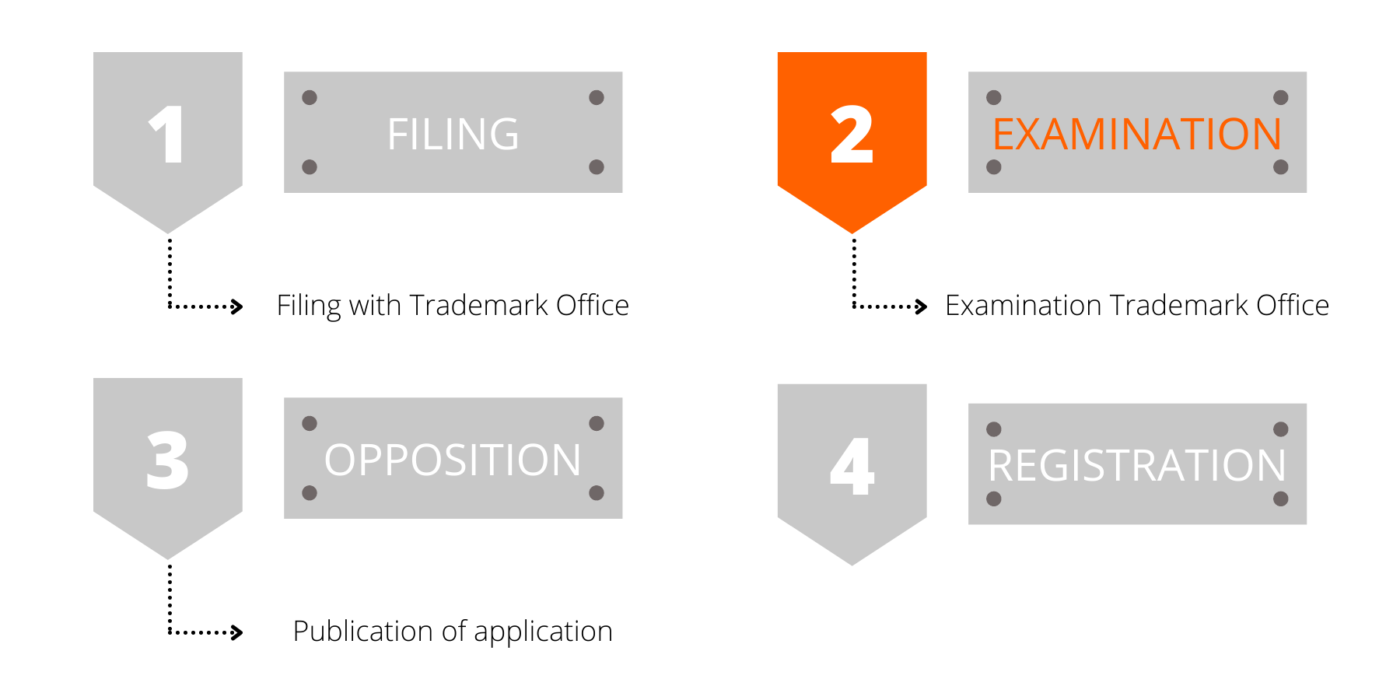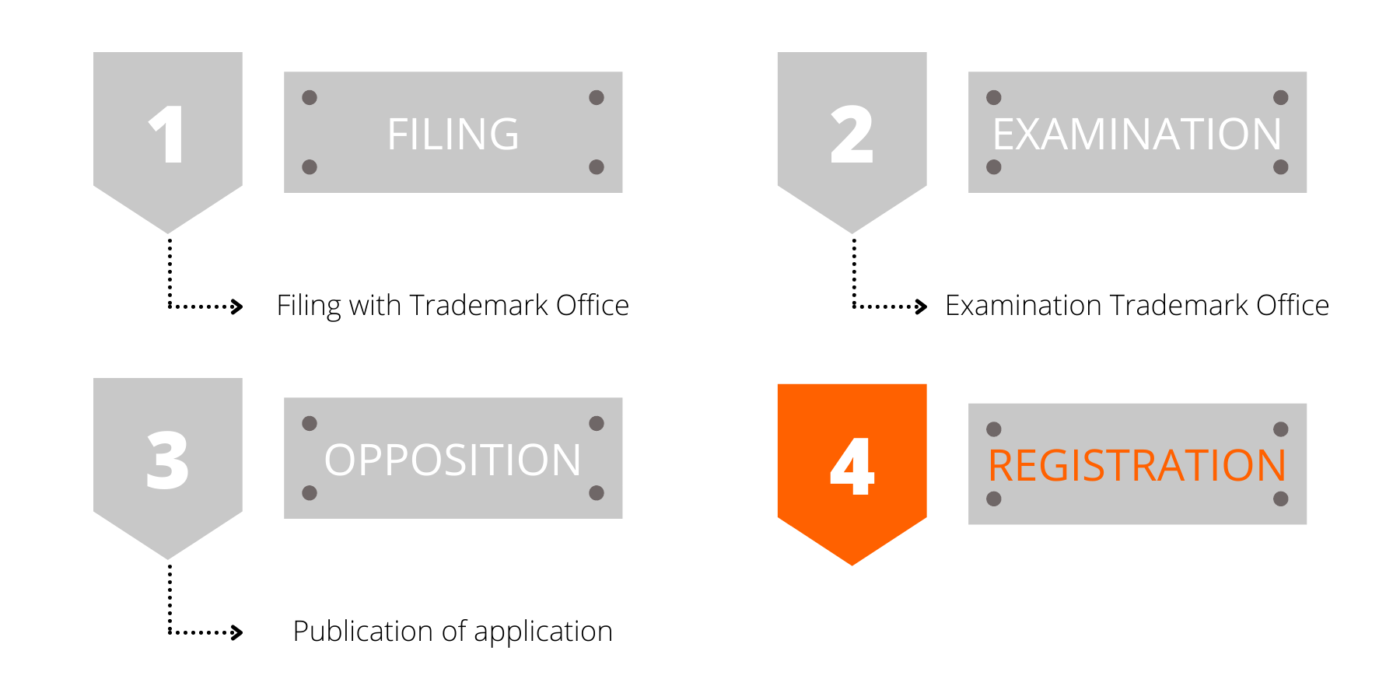Once the application has been prepared, the trademark application is filed. It is assigned a filing date and a filing number. The filing date determines the ranking order of your ultimate rights. So trademarks of other parties for which applications were filed after your filing date always have a lower ranking.
Trademark Registration
From filing to registration
A description of the main steps in the trademark registration process is presented below.
In most countries, the trademark registration process is more or less the same. However, the time taken to complete the process can vary considerably from one country to another. To give an example, registration in the Benelux countries with no obstacles is usually completed within four to five months, while the procedure may take years in Brazil or India.
Do you require more information on the specific procedure in the country of your application?
Contact us





